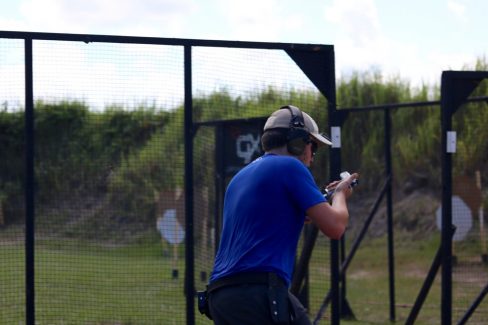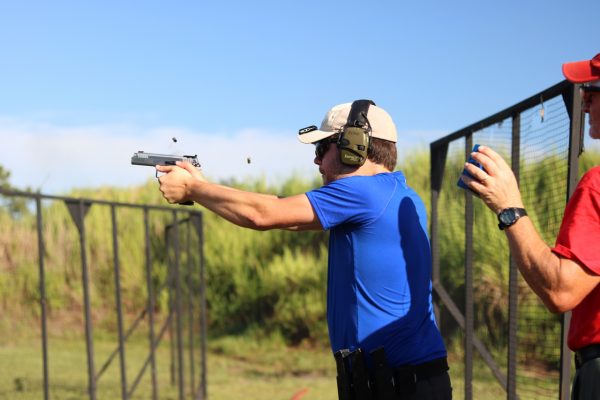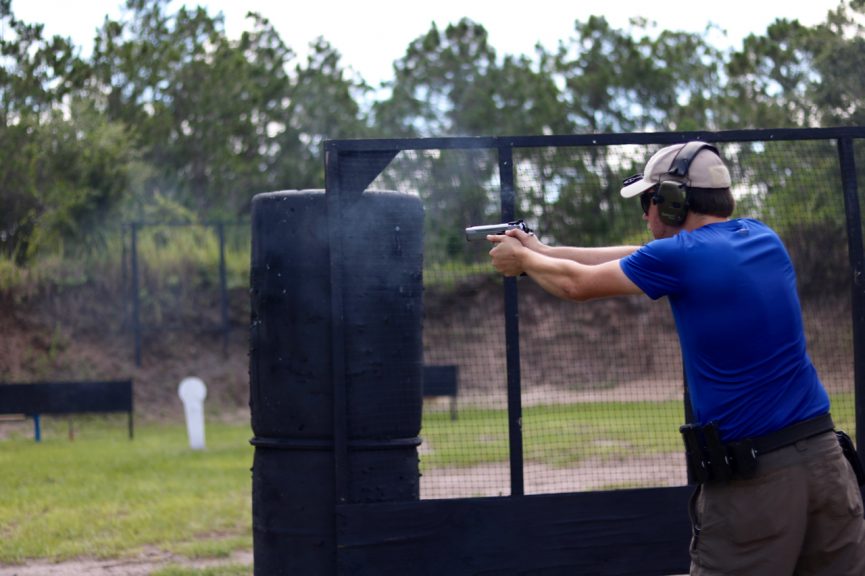Two weeks ago, I shot the 2017 US IPSC Nationals the biggest (and only) match in the US under IPSC rules, the international version of USPSA. The rules of the two are mostly the same, but the small variations can make key differences.
For example, the IPSC rules about walking the stages the day before you actually shoot the match are the same, but are enforced differently. Where the US defaults to allowing competitors to walk stages any time the range is open and there’s not a squad on the stage, IPSC goes the other way: competitors are not allowed on the stages any time other than their time slot to shoot the stage.
For a USPSA match, to be competitive, you have to show up a day early to walk through the stages and get any advantage you can. With IPSC, there’s not really any point in doing that since at best you can watch the staff shoot the stages, but not actually walk them through yourself. Not allowing walkthroughs the day before also avoids the problem of there being one or two stages that are especially complex where all the competitors end up tripping over each other as they all try to see every nuance in the stage during their day-before walkthrough.
I ended up liking that aspect of the match, even if it meant that I had a somewhat rough time going first on the last stage of Day Two, a 32 round field course with lots of options. In a strange way, it was nice to be freed of the requirement to spend 30 minutes walking through a complex stage and looking for every possible edge. I know at a big match, my competition will be doing it, so I’ll do it too in order to be competitive. But of the whole experience, spending that time is probably one of my least favorite parts. I would compare it to playing speed chess vs regular chess. When the rules of the game force you to quickly come up with something that’s sufficient, it’s more fun than having a de facto requirement to laboriously solve for perfection.

Despite only having 5 minutes to look at each stage, my strongest stages were the longer ones. Short courses, defined as 12 rounds or less, are rare in USPSA outside of classifiers. But IPSC rules require that half the stages in the match be short courses, and a few of them exposed weak points in my game. Of my three mikes in the match, two were on on very short 6 or 8 round stages. They never should have happened in the first place, but I think I’m used to very short stages being Virginia Count (limited) classifiers. IPSC got rid of Virginia Count a few years ago, but I didn’t have the presence of mind to think about that when I was shooting these stages. I’ll have to remember that for next time.
This match also took equipment check more seriously than I’ve ever seen at a USPSA match, including a sheet to check that you’re not changing what’s on your belt depending on the stage, and you’re complying with the rules of your division. I don’t think a lot of competitors try to rearrange their belts on the fly, and I don’t think it would help very much even if they did, but it was nice to see a high level of rigor applied to administering a national-level match.
Also, this was the first time I got to shoot Production with 15 round mags, and it’s definitely way more interesting. You just have more options when you can move between two positions without always reloading. With 10 rounds in a mag, if each position requires 6 rounds, you have to reload between each one, where having 15 round mags means be able to keep your gun up and shoot entering and leaving positions more often. It’s not enough of a difference to make me go to USPSA Limited just for the higher capacity, but I’d be happy if USPSA Production moved to 15 rounds.

IPSC Nationals is usually sparsely attended, for a few reasons. Every division has slightly different rules than USPSA, including loading to a slightly higher power factor or using smaller basepads or having to use factory parts in Production. It’s also always in Frostproof, Florida, which means it’s a significant amount of travel for almost anyone who wants to shoot it. The stages are characteristically hard, both in difficulty of the shots involved and the lack of run-and-gun, hosing stages.
The end result is that the crowd of shooters who shows up ends up being somewhat more serious competitors than your average big match. If I have one regret about this part of the match, it’s that I was so intensely focused on the shooting my game that it wasn’t until the middle of the second day that I started relaxing and talking to the rest of the squad a little more.
Normally, this match is one of the matches you have to shoot if you want to qualify to represent the US at the World Shoot every three years. But since this year is a World Shoot year, the teams have already been chosen and you don’t have to shoot this match to qualify. I took this as a positive since I knew my first IPSC experience would probably not go perfectly. Just going and shooting and dipping my toe in the IPSC waters made this match a success for me.
It also served as a practice run for this year’s USPSA Iron Sight Nationals in St. George, Utah. It was a chance to figure out what gear worked (my REI camp stool is still going strong and awesome as ever) and what didn’t (I can no longer recommend the Mobius Mini as anything but a budget alternative hat cam since it crapped out and missed a few stages). The match helped me identify areas to train and reminded me not to do anything I haven’t practiced on match day if I can possibly avoid it. It helped me see how stage plans that might be good enough for a stage win at local matches still leave room for improvement.
I went to this match to learn, to get experience with IPSC, to get experience at Frostproof, and to be challenged. All of those things happened. This match will be at the top of my list to shoot every year if I can make it.


